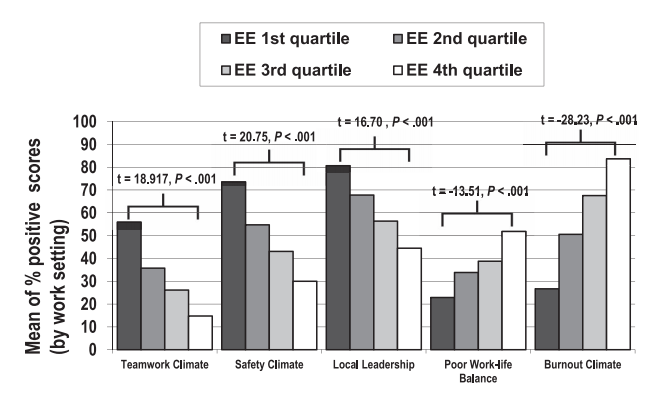Introduction
Sharing information is as crucial in research studies as making sense of data. A careful selection of visualization techniques can enhance readers’ perception of the foundation of authors’ claims. The article “The science of health care worker burnout” by Rehder, Adair, and Sexton will be used to highlight how the subject of a study can be explained to an audience through proper usage of tables and graphs. This paper will review the article on burnout and assess its use of information visualization.
Summary of the Article
The study by Rehder et al. is written with the intent of proposing a way to improve the quality of care by positively affecting nursing personnel. The authors review the adverse impact of burnout and its sources by assessing surveys from different settings across various healthcare facilities (Rehder et al., 2021). Factors that counteract this problem are provided as well, as Rehder et al. gradually draw readers’ attention toward possible solutions. There are several solutions that are highlighted as viable, such as workload changes, staff support, self-care, and expressions of gratitude (Rehder et al., 2021). The authors show how their research can serve as a foundation for practice guides against burnout.
Review of the Graph

I chose to utilize the graph on emotional exhaustion in various climates from the article by Rehder et al. Figure 1 highlights the differences in the impact of organizational environments on facility employees’ mental health (Rehder et al., 2021). This study has used a qualitative research method to provide the statistics on average emotional exhaustion levels within various work settings and climates. I came to this conclusion because the graph depicts surveyed workers’ self-described emotional states. This figure is a bar graph that categorizes the data into five groups where each has a shared set of parameters that are lined up for comparison. The explanatory variables are the work climates that influence the burnout rates among nurses. The response variable in this case is healthcare workers’ emotional exhaustion in settings with different percentages of factors related to the described work climates (Rehder et al., 2021). Four class sizes are selected for this visualization that represent their frequencies through percentages of burned out medical personnel.
Judging from the data in Figure 1, it is possible to trace the connection between low levels of teamwork, safety, and leadership and high emotional exhaustion. Moreover, the presence of high work-life imbalance and burnout sources significantly increases this parameter. In the context of the article, this information provides a starting point for examining the exact sources of burnout and developing ways to counteract them. It could be possible to present this data via a pie chart graph which could be more readable for each individual explanatory variable, yet it would make comparison difficult (Evergreen, 2019). At the same time, a table with numerical representations of mean positive scores per climate factor could provide a more precise view on the subject. However, it will require an additional effort from readers to make a comparison between all described explanatory values (Evergreen, 2019). The authors of this article had to use a bar graph for highlighting causal relationships regarding burnout.
Conclusion
In conclusion, the article by Rehder et al. gives an extensive overview of burnout, its sources, and solutions. The paper uses a bar graph to represent the impact of different factors on healthcare workers’ overall burnout levels. This approach to visualization provides the highest readability among the available options and ensures that the audience follows the authors’ idea regarding the key issues that must be resolved to decrease stress, depression, and turnover among nurses.
References
Evergreen, S. D. (2019). Effective data visualization: The right chart for the right data. SAGE Publications.
Rehder, K., Adair, K. C., & Sexton, J. B. (2021). The science of health care worker burnout: Assessing and improving health care worker well-being. Archives of Pathology & Laboratory Medicine, 145(9), 1095-1109.